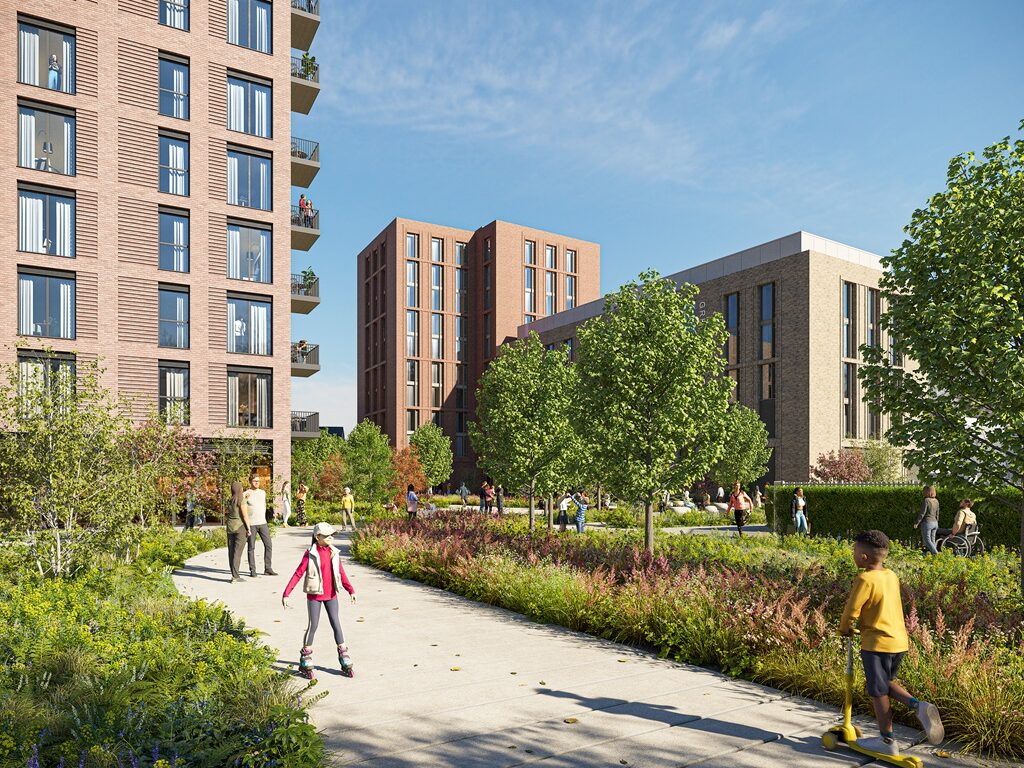Middlesbrough seeks way forward on ‘nutrient neutrality’
With high nitrogen levels in the Tees slowing the flow of housing through planning, the council is stepping up efforts to remove agricultural uses from publicly-owned sites as part of mitigation measures.
In an item that goes before Middlesbrough Council’s executive on 20 June, the executive will be asked to sign off a proposal that will bring to an end farming tenancies across 149 acres of publicly owned land, bringing down nitrogen levels associated with farming.
Nutrient neutrality – how we got here
In March 2022, Natural England published statutory advice for certain local planning authorities, including Middlesbrough, setting out a requirement for new developments to achieve nutrient neutrality. All planning authorities within the Tees river catchment are affected by this advice, due to excess levels of nitrogen being recorded in the River Tees.
The Teesmouth and Cleveland Coast Special Protection Area and Ramsar Site (the SPA) is a designated European habitat site, meaning it is offered the highest level of protection under the legislation. The council, in its role as the ‘competent authority’, must ensure new development proposals accord with this legislation – so those projects put forward since 2022’s notice that are likely to lead to an increase in nitrogen levels in the Tees have thus far been unable to proceed.
What it means
As domestic waste water is a contributor to nitrogen levels, any proposals that will lead to an increase in the number of overnight stays in Middlesbrough must face the question of nutrient neutrality – residential, hotels and student accommodation schemes. Offices and industrial projects may proceed. Housing applications already cleared have been allowed to continue.
The change is acting as a significant block: according to the report, since Natural England’s advice was issued, Middlesbrough has been unable to determine planning applications for 1,452 homes, 285 student bedrooms, a four-bedroom HMO and a 48-bed hotel.
However, research done over the last year shows that the impact of new development in Middlesbrough is not as high as had been thought. One factor is that Middlesbrough’s levels of inward migration are low: only one in every 12 new homes studied across three developments were occupied by residents new to the area, while outward migration continues to outstrip the incoming numbers – that is, new development is unlikely to lead to a net increase in the local population.
Mitigation – the options
Housing delivery is an issue in Teesside as it is everywhere in the UK, and government realises the blockages in the system must be worked around. Natural England is promoting two broad approaches to mitigation.
The first involves taking agricultural land out of use. Agriculture and farming normally involve high levels of nitrogen discharge as a result of fertiliser or activity associated with animals, and will most likely be a higher contributor of nitrogen than new development. By ceasing those uses, there will be a net positive impact on the Tees.
The main benefit of this approach is that it is a quick and certain solution – however, it requires a significant amount of land to be taken out of food production and laid fallow, and there is a limited supply of appropriate land within Middlesbrough’s boundary.
The second approach involves the creation of “constructed wetlands” where natural reed filtration systems are developed to capture water prior to it entering the River Tees. As it passes through the filtration system, nitrogen is removed from the water before it is discharged into the river. This option is more technical, will take three years to get in place, and will require ongoing, likely expensive, maintenance.
Any mitigation must be provided within the Tees catchment. While both methods will have a cost to developers and landowners, and the volume of new dwellings will be affected, it is expected that the volume of mitigation required should mostly be in place by 2030.
Natural England has now introduced its nutrient mitigation scheme for the Tees catchment, and is progressing the purchase of agricultural land and wetlands alike, so that it can offer credits to developers to offset proposed schemes.
The council’s plan
An initial assessment suggests that 12 parcels of council-owned agricultural land comprising a total of 149 acres could be taken out of agricultural use. All are located to the south of the borough, close to Coulby Newham and Nunthorpe.
The sites are described as “subject to farm business tenancies” and if all were currently in use as such, they would bring in £16,000 a year for the council. As it is, not all are in use, and those that are are only leased to the end of September this year. The council will also save money on maintenance of the sites.
The council estimates that the reduction of agricultural uses on its sites could help it deliver these benefits on council-owned sites elsewhere:
- More than 1,400 additional dwellings
- More than £380,000 in additional council tax receipts during the medium term financial planning period to 2025/26, and over £3.37m in additional council tax receipts per year once all the sites are developed
- Contribution to additional New Homes Bonus grant (subject to its continuation)
- Approximately £54.8m in capital receipts from housebuilders.
The council executive is asked to take the agricultural sites out of farming use as soon as tenancies have expired; and also to delegate authority to the director of regeneration to agree an internal credit system for nitrogen credits to mitigate new housing development, much as the Natural England system has been set up.
Included in the report for cabinet is a list of the council-owned housing sites that could benefit from the introduction of the nutrient neutrality mitigation scheme: Hemlington North, Hemlington Grange South, Newham Hall, the former St David’s school, and Nunthorpe Grange.





